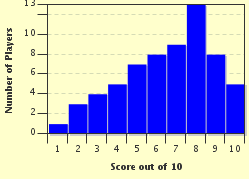Quiz Answer Key and Fun Facts
1. The story of Hanukkah begins with a war between King Ptolemy V of Egypt and the king of the Seleucid Empire. What was his name?
2. Although the King of Syria assured the Jews of Jerusalem that they would be able to "live according to their ancestral customs", his son invaded Judea and looted the Temple. Which incarnation of the Temple was defiled?
3. According to the "Books of the Maccabees", which Jewish priest became the leader of a revolt against the Seleucid Empire?
4. Why was it necessary to cleanse and rededicate the Temple after the Jewish revolt against the Seleucid Empire was successful?
5. What nickname was given to Judah, who became the leader of the Jewish revolt against the Seleucids after his father died?
6. Part of the rededication of the Temple after the successful Jewish Revolt against the Seleucids included the lighting of a menorah for several nights. How many nights was the menorah to be lit?
7. What problem was faced by the Jewish people as they attempted to rededicate the temple after the Jewish revolt against the Seleucids?
8. Hanukkah is also known as the Festival of Dedication or by what other name?
9. How are the dates for Hanukkah determined?
10. In which of the following sources is the story of Hanukah found?
Source: Author
ponycargirl
This quiz was reviewed by FunTrivia editor
bloomsby before going online.
Any errors found in FunTrivia content are routinely corrected through our feedback system.


